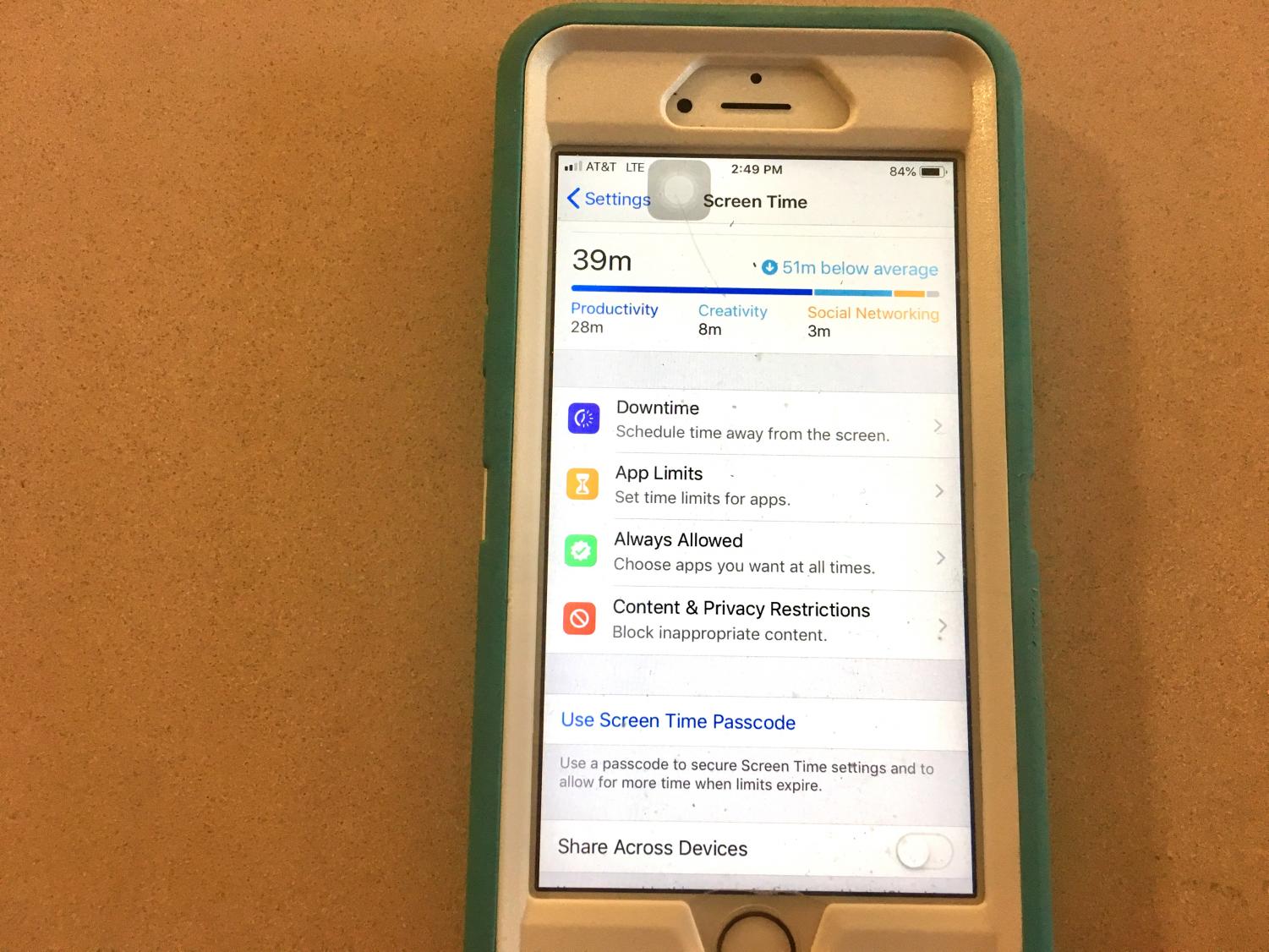For those with eyes glazed, unhealthily staring into the glare of an electronic screen, Apple is to the rescue. As of Sept. 17, 2018, owners of iPhones from version 5S to X have the option to use Apple’s new Screen Time feature.
Screen Time, which was issued as a part of Apple’s Internetwork Operating System (IOS) 12 update, monitors the overall time that you spend on your phone, how much time you spend using certain applications and can even count the number of times you pick up your phone during a certain interval of time. Weekly, Screen Time will consolidate this data into a report that shows exactly which app categories and individual applications consumed the greatest amounts of your precious time.
“At the end of the week, Screen Time will give me a review of my phone usage. It shows what app genres I use the most and which specific apps I spend the most time on. I am able to learn more about how I use my phone from the reports,” freshman Caroline Roy said.
The addition of Screen Time comes along with other initiatives by Apple to help users moderate their device usage and improve overall digital health. App Limits, another new feature released with IOS 12, utilizes data garnered from Screen Time tracking to enable iPhone owners to manage the time that they spend on their device. In App Limits, you can set restrictions on the amount of time a device or a certain application is used. When this limit is reached, you will receive an alert saying so. Although the alert comes with an override option and users can simply continue in their indulgence, a reminder of screen time usage can prove helpful in efforts to repress the addictive activity that is brainlessly using a screen.
“Screen Time helps me use my phone less because it makes me conscious of when I use my phone and lets me know when I need to use it less … Sometimes I pay attention to the alert but sometimes I just override them and continue to use my phone. Overall though, I feel like Screen Time helps me limit my phone usage,” junior Jackie Kabiri said.
Apple’s actions to bring attention to the ever increasing matter of screen usage is one that is very necessary, but fairly late. As digitized content takes over the majority of what people look at, the harmful effects of overexposure takes place more rampantly. The iPhone, which has been the leading screened cellular telephone since its release in 2007, can cause numerous health concerns when users spend excessive amount of time on its screen. These issues range from strained and dry eyes, sleep disturbance and poor neck posture from looking downwards at the device. Links have even be proven to exist between too much screen time and the development in attention-deficit disorders in young people.
“Sometimes I will get a headache after staring at my phone for a long time. My eyes will occasionally feel dry and glazed as well,” senior Anelise Johnson said.
In a 2016 poll administered by Common Sense Media, 50% of teens felt that they were addicted to their mobile devices. With phones being a central source of connection between contemporary teenagers, heavy usage is deemed widely acceptable and largely neglected as a serious issue. As devices reliably occupy the pocket space of teenagers, ready to be used at a moment’s notice, dependency develops and young people put more and more of their lives into their technology.
“When everyone is addicted to their phones, actual relationships are harmed. People are just talking through their phones and cannot have genuine conversations,” Johnson said.
While the intents of Apple’s Screen Time are beneficial to the Apple user, the new features only scratch the surface of overhauling how people use their technology. The notifications and awareness of usage provided by Screen Time have acted to initiate what needs to be a more macro movement in revising the culture of screen usage: educating young people on the harms of overexposure and curbing the development of screen dependency. Now postpone reading more Sentry articles, put down your device and see the world around you!







































